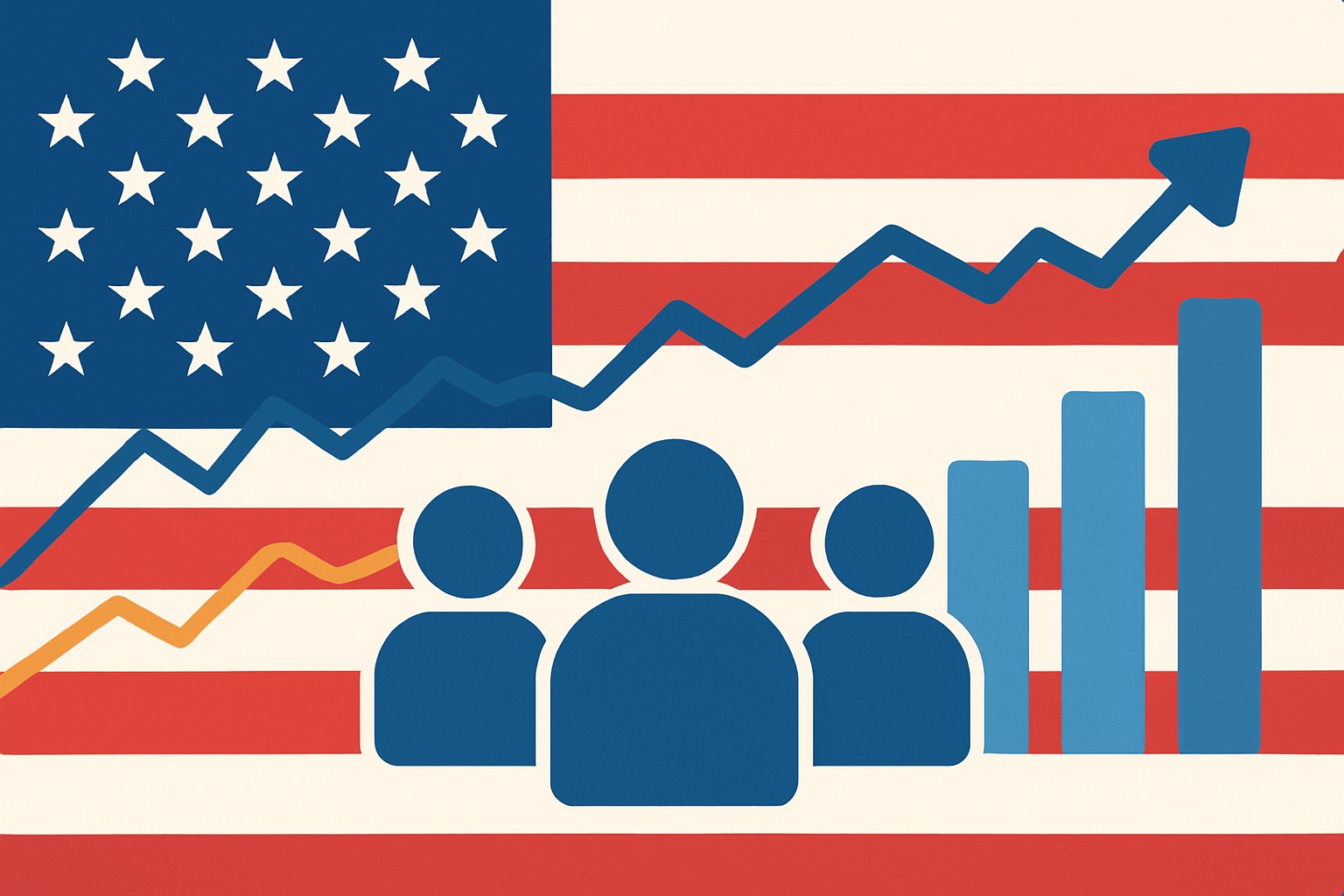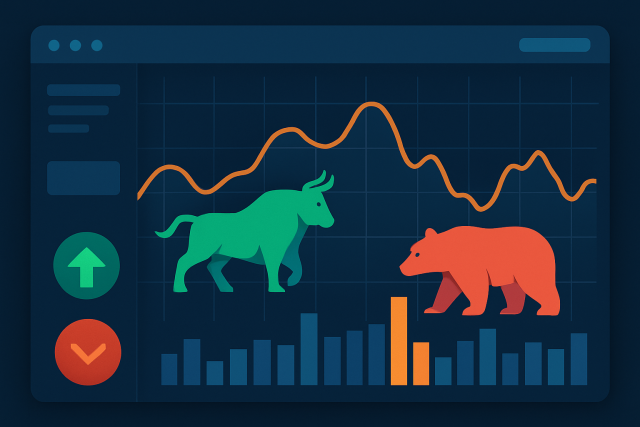
Meaning of Non Farm Payroll for Traders
The Non Farm Payroll report is a key economic indicator shaping trading strategies worldwide. This a...

The nonfarm payrolls definition refers to a key economic indicator that often grabs the spotlight in financial news. It tallies the number of paid employees across the U.S. while skipping certain sectors to give us a clear snapshot of the economy's health.
Nonfarm payrolls represent the total headcount of paid workers in the United States excluding farm workers, government employees, private household workers and nonprofit staff. These groups get the boot because sectors like agriculture and government have different employment patterns and reporting rules.
The nonfarm payrolls report is pretty much the heartbeat of the U.S. economy. When new jobs appear, it usually hints that businesses are picking up steam and everyday individuals are spending more. On the flip side, when jobs start slipping away it is often a red flag for economic hiccups or full-blown slowdowns.
It plays a key role in shaping the Federal Reserve's moves on interest rates by giving a snapshot of just how strong or shaky the economy looks at the moment.
The stock market often reacts quite dramatically to the report since job numbers tend to sway expectations around corporate earnings quite a bit.
Currency values, especially the U.S. dollar, shift as traders adjust their outlook on the economy's growth. It is like a financial mood ring, really.
It sends a clear signal about whether the economy is expanding or pulling back, which is key for businesses plotting their next big investments.
Policy makers lean heavily on this data to steer their decisions about employment programs and economic support, aiming to keep things on an even keel.
The U.S. Bureau of Labor Statistics rolls up its sleeves every month to gather nonfarm payroll data by conducting wide-ranging surveys with businesses and government agencies all over the country. These surveys dig into detailed employment figures to estimate just how many people are drawing a paycheck in key industries.

Economists and analysts at the U.S. Bureau of Labor Statistics compiling and reviewing nonfarm payroll employment data.
When you’re diving into the nonfarm payrolls report it’s smart to focus on the total jobs gained or lost and the unemployment rate. Also check any tweaks made to previous months’ data. These bits of info often hold the key to understanding the labor market’s pulse.
| Metric | What It Means | Why It Matters |
|---|---|---|
| Total Payrolls | The number of jobs gained or lost during the month, giving you a quick peek at how the job market is flexing its muscles | Offers a handy snapshot of overall job market strength, showing whether things are heating up or cooling down |
| Unemployment Rate | The share of people actively on the hunt for work, capturing the job search hustle in real time | Sheds light on just how easy or tough it is out there to land a new gig |
| Average Hourly Earnings | Tracks how average wages are moving across various jobs, giving a sense of paychecks' pulse | Highlights trends in pay growth and inflation pressures, hinting at how far your dollar might stretch |
| Labor Force Participation Rate | Represents the slice of the population either working or actively looking for work, measuring workforce engagement | Reveals how involved people really are in the world of work — whether they are in the game or sitting it out |
| Revisions | Updates made to previous months’ employment figures, fine-tuning the story with better data | Helps sharpen the accuracy of employment numbers, because sometimes the first take needs a little polish |
It’s a pretty common misconception to think that nonfarm payrolls capture total U.S. employment or that a surge in job creation always signals a thriving economy. In reality, the report skips over certain groups of workers.
Understanding nonfarm payrolls data is important but it’s just one piece of the economic puzzle. To get a clearer and more reliable snapshot of the economy, it’s best to look at it alongside GDP, inflation rates and consumer confidence.
The release of the nonfarm payrolls report often stirs up quite a bit of action across stocks, bonds and currencies and commodities.
Stock markets often throw a tantrum as investors pause to rethink corporate earnings forecasts after fresh job growth data. It’s like everyone’s taking a step back to catch their breath.
Bond yields can sway either way depending on how inflation expectations shift with rising wages—sometimes up, sometimes down.
The U.S. dollar usually flexes its muscles when employment numbers beat expectations, signaling a boost of confidence in the economy that traders can’t ignore.
Investor sentiment tends to shift like the wind and shakes up risk appetite, leading to a reshuffling of assets across global markets.
Commodities like gold often take a tumble when jobs data points to robust economic growth as demand for safe-haven assets cools off.
For beginners trying to wrap their heads around economic trends, understanding the nonfarm payrolls definition can be a real eye-opener for making smarter investment decisions.
Reading nonfarm payrolls data is a bit like checking the weather forecast. It gives you some valuable clues about what could be on the horizon, but it’s rarely spot-on and usually makes the most sense when you look at it alongside other info. Kind of like carrying an umbrella just in case, even if the sky looks clear.
Are you tired of juggling multiple tools for your trading needs? TradingView is the all-in-one platform that streamlines your analysis and decision-making.
With its powerful charting capabilities, real-time data, and vibrant community, TradingView empowers traders like you to stay ahead of the market. Join thousands who trust TradingView for their trading success.
As a dedicated trader, you know the power of technical analysis in navigating the financial markets. TrendSpider is the cutting-edge tool you need to take your trading strategies to new heights. With its advanced charting capabilities and automated pattern recognition, TrendSpider empowers you to make informed decisions faster.
15 articles published
Known for demystifying complex derivatives trading through accessible education, this former Wall Street trader turned educator empowers retail investors with institutional-level strategies.
Read Posts
The Non Farm Payroll report is a key economic indicator shaping trading strategies worldwide. This a...

Retail sales data is a key economic indicator that impacts trading decisions. This guide breaks down...

Learn how the CBOE Put Call Ratio serves as a powerful indicator of market sentiment, helping invest...

The JOLTS report reveals crucial labor market dynamics often missed by headline employment data. Lea...
